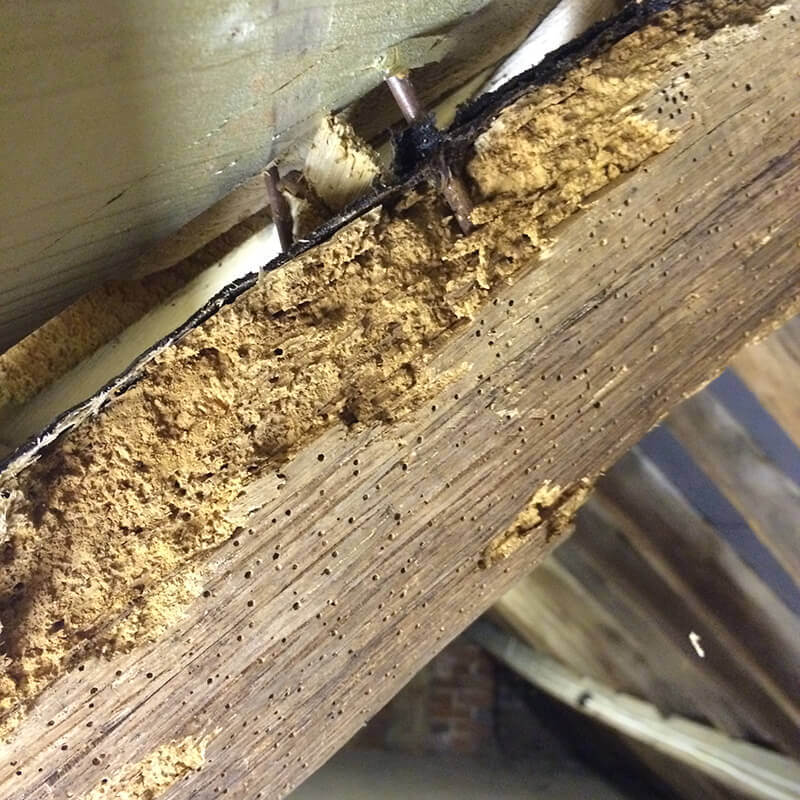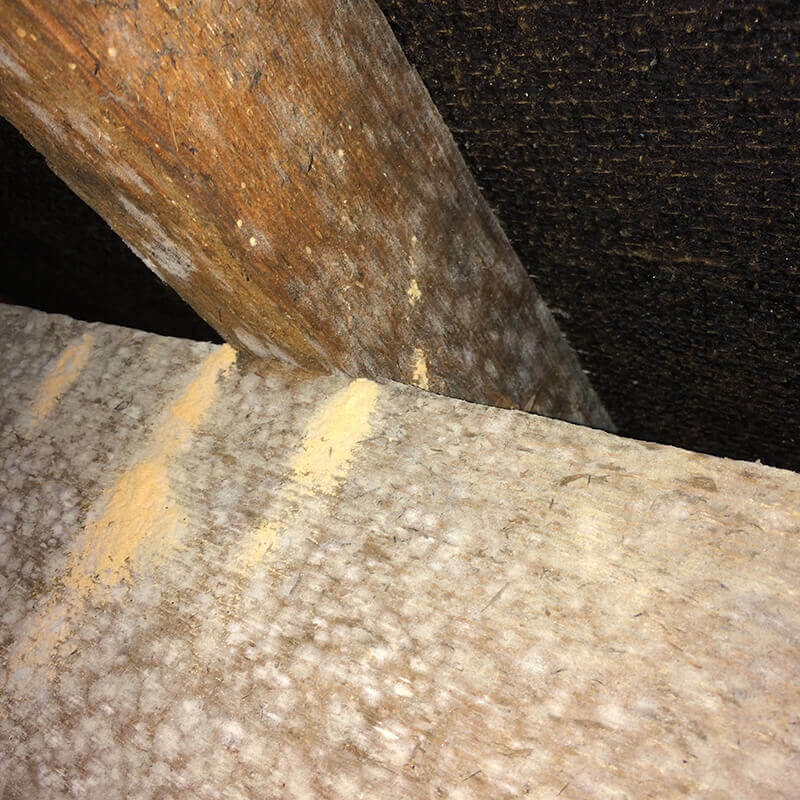Contact Us
Timber decay affects many properties across the UK and can cause severe and unsightly damage to a property’s structural and finishing timbers. Timber is at its most vulnerable and is more likely to decay when it remains damp over long periods.
The first step after discovering fungal decay is to make a careful inspection of the building to determine how and where water is entering. The defect permitting access for moisture to enter the building must be repaired, further entry prevented and the area should be dried out sufficiently. The specialist timber preservation Swindon survey should identify the possible source(s) and recommend corrective action, such as repairing blocked gutters and defective rainwater goods and replacing blocked air bricks.
In addition to the above, it is important to look for evidence of internal sources of moisture, as these may not be visible from the outside.
Specialist timber preservation Swindon surveys should be carried out by a qualified surveyor with a minimum of a CSRT (certificated surveyor in remedial treatments) qualification as required by the Property Care Association (PCA). All Biocraft South West timber preservation Swindon surveyors have achieved the CSRT & CSSW qualification to carry out specialist timber surveys.

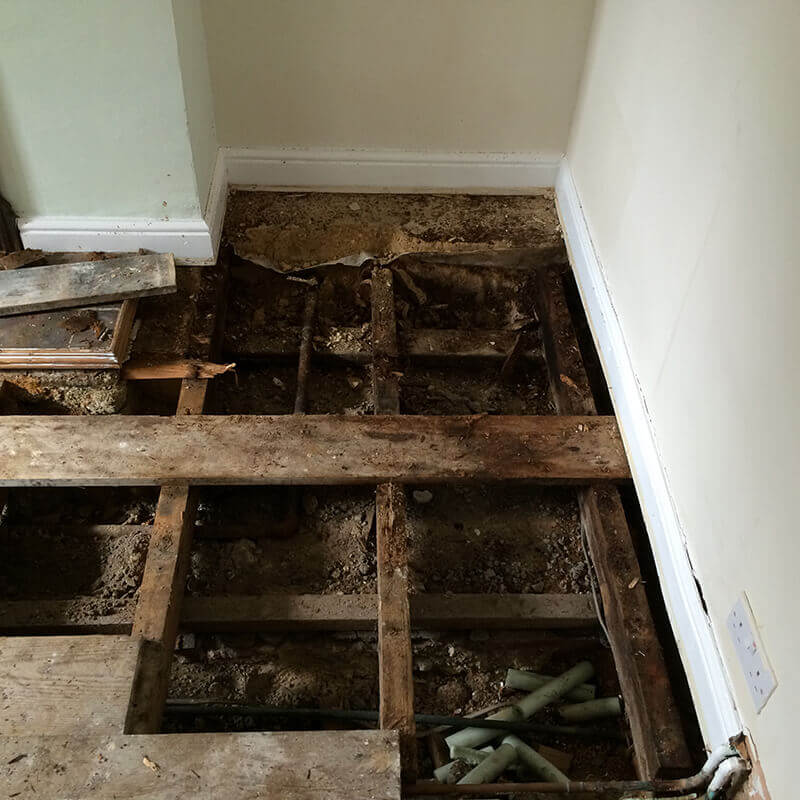

There are two main types of rot which can be identified by their colour and the way they affect the timber. Brown rot cause the timber to crack in a cube-like manner; the cubes vary in size depending on the timber and the type of rot present. The most common brown rots are Dry rot, Cellar fungus and Mine fungus.
“White” rots cause the timber to appear fibrous and much lighter in colour. The most common white rots are Phellinus Contiguus, Asterostroma spp and Donkioporia Expansa.
The most serious form of timber decay is dry rot, which is caused by the fungus Serpula Lacrymans. The successful eradication of dry rot requires carefully planned measures carried out by timber preservation Swindon specialists who use specially designed products which treat against insect and fungal attack. These products are formulated to treat at risk timbers that are prone to dampness, such as embedded joist ends, lintels, wall plates, rafters and timber panelling.
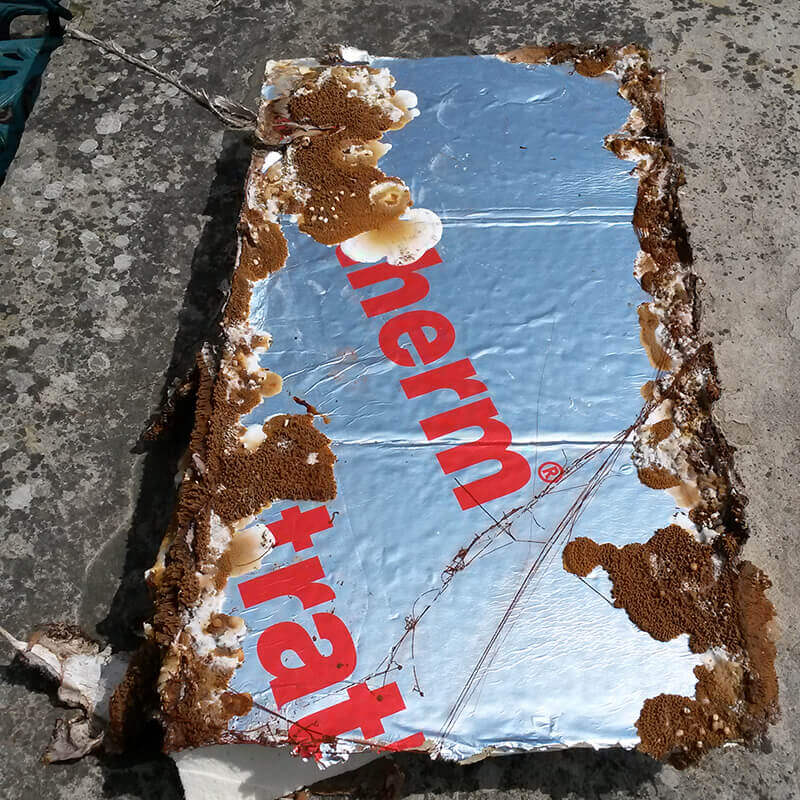
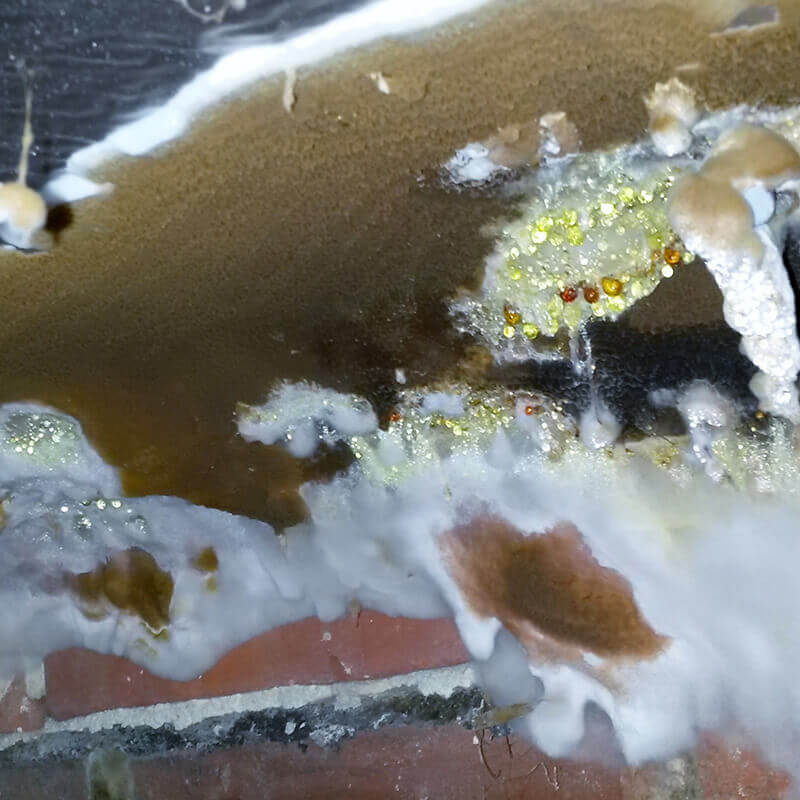
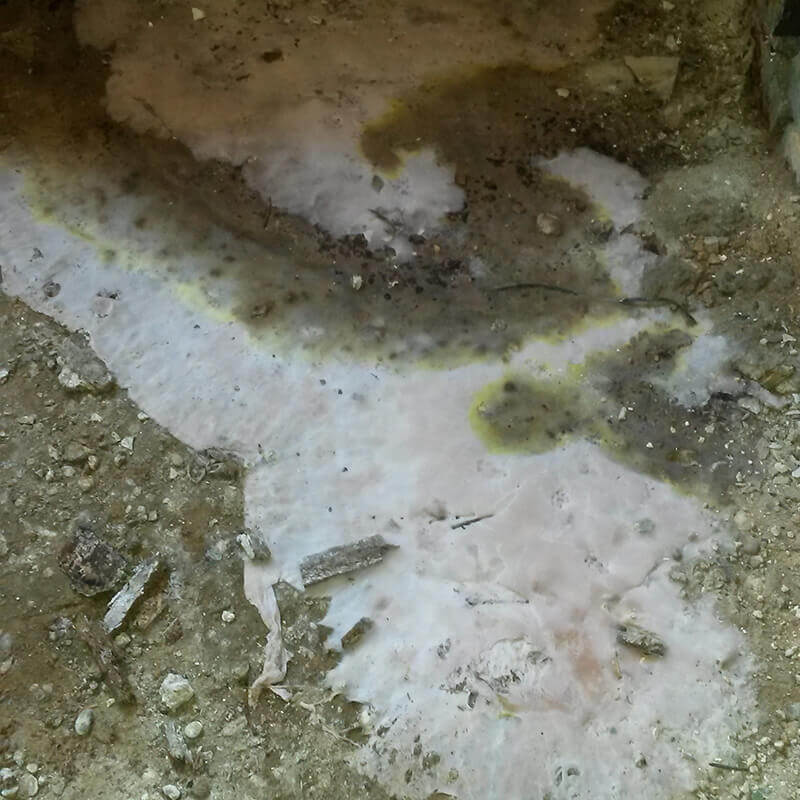
There are many types of insects that use wood as a habitat. Some insects are restricted to the forest, others can live in timber that has been felled and incorporated into the home. The most commonly known wood boring insect is known as Woodworm.
Woodworm is a general classification given to wood boring insects. One of the most recognised wood boring insect is the Common Furniture Beetle which is often found in structural timbers such as roofs, floors and joists. The continuous presence of wood boring insects can result in severe damage and can ultimately compromise the structural integrity of the building
Pre-purchase reports frequently call for Woodworm surveys to be conducted and woodworm treatments carried out if required. A specialist timber survey should identify the type of infestation and recommend corrective action, such as treatment of the existing timbers with suitable preservatives, or the removal and replacement of decayed or infested timber.
To arrange a survey of your property or for further information regarding timber preservation contact us today on 01793 272085
